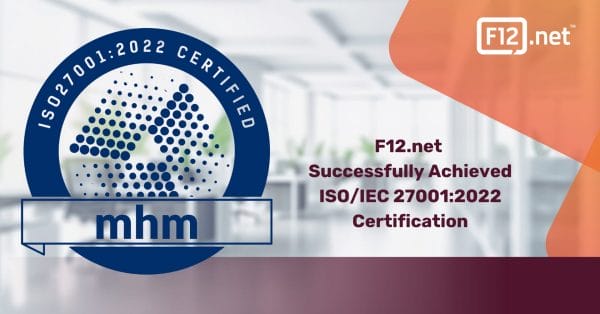Brief: In this article, we examine the issues around a recent Russian hack on North American OT, explore additional issues in OT and remote management vulnerabilities access that could be exploited, and take a look at how we here at F12 might handle them.
“In the fortress you will need more than men and swords. You will need the power of the glave.”
Ynyr – Krull
Attack Leveraging Remote Management Vulnerabilities
Imagine if one day, your manufacturing plant’s automated assembly line suddenly halts or starts producing defective products.
This isn’t due to a mechanical failure, it happens because hackers from across the globe exploited outdated software on your networked machines.
And they don’t need swords, or the glave. They simply need you to be running out of date systems, and addressing some basic security concerns.
Now, apply this scenario to any of our Canadian critical sectors—energy grids disrupted, water purification systems manipulated, causing public health concerns.
This is exactly the reality companies in North America and Europe are facing as cyber attacks target operational technology, emphasizing the need for stringent cyber security enhancements to safeguard essential infrastructure.
And it’s not a fiction.
It’s exactly what happened recently.
A recent article from SecurityWeek reports on cyber attacks by pro-Russian hackers targeting operational technology systems in North America and Europe. The post highlights vulnerabilities exploited in industrial control systems across sectors like water, energy, and agriculture, primarily through internet-exposed interfaces with weak security measures like default passwords or outdated software.
These attacks led to temporary operational disruptions, with most systems quickly restored to manual control, emphasizing the urgent need for improved cyber security practices in these critical areas.
This situation should really raise alarms across various sectors—energy firms, water utilities, and agricultural operations are the most at risk. These businesses rely heavily on operational technology that, if compromised, could lead to not just data breaches, but actual interruptions in essential services. Companies in manufacturing and those using similar industrial controls should also be on alert.
This is a wake-up call to tighten up security and review system vulnerabilities.
The article talks about Russian hackers increasingly targeting systems much like those you use in your OT (operational technologie), such as those in the energy or water sectors. What’s really eye-opening is how they’re exploiting pretty basic gaps—things like using factory-set passwords or not updating software—which allows them to mess with industrial controls remotely.
For you, this means you’ve got to tighten up.
It’s crucial you look over your systems, update where needed, and really lock down access. These aren’t just hypothetical risks; they could translate to real-world issues like shutdowns or equipment malfunctions.
Ensuring your systems are robust not only keeps you running smoothly but also safeguards against potential threats that could disrupt your operations or, worse, your reputation.
In this post, we examine the issues around the Russian hack, explore additional issues in OT security that could be exploited, and take a look at how we here at F12 might protect against them.
Brief of the Russian Hack
The SecurityWeek article reports on cyber attacks by pro-Russian hackers targeting industrial control systems in North America and Europe. These hackers exploited vulnerabilities such as default passwords and outdated software in exposed human-machine interfaces, affecting sectors like water, energy, and agriculture. The attacks caused temporary operational disruptions, although most affected systems were quickly reverted to manual control. This highlights the critical need for improved cyber security measures in operational technology environments.
In the following post, since we don’t have direct knowledge of the specifics of the event, we can explore what we imagine might have happened and possible reasons why it occurred.
The cyber attacks described probably happened primarily because many industrial control systems are still running on outdated software and using default passwords, which are often known or easily guessable. These systems, specifically the human-machine interfaces (HMIs), are frequently accessible via the internet for remote management.
Unfortunately, this accessibility and lack of strong ICS cyber security makes them vulnerable to hackers scanning the internet for these weaknesses. Hackers can exploit these vulnerabilities to gain unauthorized access to manipulate system operations, causing disruptions in essential services like water supply, power, and agriculture.
Why OT Issues Occur and Why Industrial Tech is So Vulnerable
Why are so many industrial systems vulnerable today?
It often comes down to two main issues: outdated software and default passwords. Upgrading these systems can be costly and complex, leading many companies to delay these updates.
Outdated software are systems that are no longer supported by their developers or have not been updated to incorporate the latest security patches and features. This can leave systems vulnerable to new types of cyber threats that exploit these outdated elements.
Default passwords are the factory-set passwords that devices or software come with upon purchase. Many users fail to change these easily guessable passwords, making it simple for attackers to gain unauthorized access to these systems.
Both outdated software and default passwords are significant security risks because they offer relatively easy entry points for cyber attackers into critical infrastructure systems.
IoT Opens Up New Vulnerabilities
Many OT and industrial systems historically weren’t connected to the internet due to security and reliability concerns. However, the trend has been shifting, particularly with the rise of the Internet of Things (IoT), which leverages internet connectivity to enable remote management, monitoring, and data analytics.
This shift brings efficiency and flexibility but also opens up new vulnerabilities, such as those seen in cyber attacks. Securing your IoT is a balance between the operational advantages of connectivity and the increased risk of cyber threats.
Remote Management Risks
The increasing connectivity of operational technology (OT) systems, specifically human-machine interfaces (HMIs), to the internet for remote management offers numerous benefits such as enhanced monitoring and control, more efficient operations, and better data insights.
However, this connectivity also poses significant risks. HMIs that are accessible online can be targeted by cyber criminals who search for systems with outdated software or default passwords.
By exploiting these vulnerabilities, hackers can gain unauthorized access to these systems, manipulate their operations, and potentially cause disruptions in critical services.
Supply Chain and Third Party Vulnerabilities
These cyber security and remote management vulnerabilities can significantly impact your supply chain and third-party vendors.
Vulnerabilities in your system can be exploited to gain access to, or disrupt, the broader network, including your suppliers and partners. This can lead to data breaches, operational disruptions, and compromised product integrity.
When vulnerabilities in your system are exploited, it can act as a gateway for cyber criminals to access not only your network but also extend to your supply chain security and third-party vendors. This interconnectedness means that a breach in one area can cascade, causing data breaches across multiple partners, operational disruptions that affect production or distribution timelines, and even compromises in product integrity if tampered data affects manufacturing processes.
Essentially, your cyber security weaknesses can inadvertently expose your entire supply network to risks, underlining the importance of securing all network touch points, not just your own.
Remote Management Vulnerabilities for OT, and How We Would Address Them
In industrial and OT environments, there are several common vulnerabilities associated with remote management that organizations need to address.
Here’s a comprehensive list:
Vendor Access to Network Systems: One key remote management vulnerability in OT that impacts your supply chain involves insecure remote access to network systems, often used by both internal teams and external vendors. It’s like having a back door that isn’t just for you but for your suppliers too. If it’s not secure, anyone could sneak in. This vulnerability is crucial because if exploited, it could disrupt not just your operations but your entire supply chain.
F12 can help by ensuring secure, authenticated, and encrypted remote connections are established, and monitoring these connections for any unusual activities. We can set up VPNs, use multi-factor authentication, and implement strict access controls, ensuring that only authorized users from your vendors or suppliers have access to necessary parts of your network. This layered security approach helps protect your entire supply chain from potential cyber threats.
Insecure Remote Access Points: Unsecured access points can be exploited by attackers to gain control of networked devices. Imagine a door that’s left unlocked; that’s essentially what an unsecured remote access point is for your network. Attackers can find these “doors” and use them to enter your systems and cause havoc. It happens because sometimes, in the rush to make systems accessible remotely, security isn’t prioritized—leaving default settings or weak protections in place.
As a Managed Security Service Provider (MSSP) we make sure all your doors are locked and also install advanced locks and monitor for any suspicious activity around the clock. We manage your security operations, update defences as needed, and respond to threats, ensuring that your networked devices are well-protected against unauthorized access. This kind of partnership is important for maintaining robust security, especially as cyber threats become more sophisticated.
Outdated Software: Systems running outdated software may not have the latest security patches, making them susceptible to newer types of cyber attacks. Think about outdated software as a really old lock on your front door, one that burglars have learned to pick easily because it’s been around so long. When your systems run on outdated software, they lack the latest security defences—kind of like missing the newest, strongest locks. Hackers exploit these weaknesses with new methods that old software isn’t ready to defend against.
We ensure your software is always up to date, sort of like a security service that replaces old locks with the latest ones, ensuring your defenses keep up with evolving cyber threats. We manage these updates and patch vulnerabilities before attackers can exploit them, keeping your digital “house” safe.
Default Credentials: Devices that still have their factory settings (like default usernames and passwords) are easy targets for attackers. Imagine using the default lock code that came with your phone for everything—it’s convenient, but if everyone knows it, it’s not secure at all. That’s what happens with devices that use default usernames and passwords; they’re incredibly easy for attackers to guess and gain access. These default credentials are like leaving your keys in the car with the door unlocked.
We help by ensuring these default credentials are changed to something strong and unique as soon as devices are deployed. We keep track of these credentials across your network, update them regularly, and ensure that they are as secure as possible, minimizing the risk of unauthorized access.
There are a few ways we might help eliminate remote management vulnerabilities and ensure that default credentials are changed in several effective ways:
- Credential Audits: Regularly review and audit device and system credentials to identify any that remain set to defaults.
- Policy Enforcement: Implement and enforce strict security policies that require the change of default usernames and passwords before deploying new devices into the environment.
- Automated Tools: Utilize automated tools that can scan the network for devices using default credentials and either alert administrators or automatically update them.
- Education and Training: Provide training sessions for IT staff on the risks associated with default credentials and best practices for secure credential management.
- Configuration Management: Use configuration management tools to maintain control over device settings, ensuring all new devices are configured with secure credentials from the start.
Lack of Network Segmentation: Without proper segmentation, attackers can move laterally across a network once they gain access. Imagine your network as a big house with many rooms but no internal doors—once someone gets in, they can go anywhere they like. That’s what happens with a lack of network segmentation; if a hacker gains access to one part of the network, they can easily move to other parts and access sensitive data or critical systems.
F12 can help manage and secure your network by installing virtual “doors” or barriers within the network. We create separate segments for different parts of your network, so even if attackers get in, they’re confined to a limited area. This not only limits the damage they can do but also makes monitoring for suspicious activity more manageable.
F12 might enhance your network segmentation in the following ways:
- VLAN Implementation: Deploy Virtual Local Area Networks (VLANs) to divide the physical network into multiple logical segments, each with different access rights.
- Firewall Configuration: Use firewalls to control traffic between segments, ensuring that only authorized communication occurs.
- Access Control Lists (ACLs): Define and implement ACLs to restrict access to network resources based on user roles and requirements.
- Zero Trust Architecture: Adopt a Zero Trust framework that requires verification for every user and device trying to access resources on the network, regardless of where they are connecting from.
- Regular Audits: Conduct regular audits and reviews of network segmentation policies and practices to ensure they are effective and adjust them based on the evolving threat landscape.
These strategies help in effectively isolating parts of the network, limiting the potential spread of breaches, and enhancing overall security posture.
Insufficient Authentication and Authorization: Systems that do not require robust authentication measures (like multi-factor authentication) offer minimal resistance to unauthorized access. You can liken insufficient authentication and authorization to having a simple latch on your front door; it’s too easy for someone to push open.
When systems don’t require strong verification measures like multi-factor authentication (MFA), it’s much easier for unauthorized users to gain access. This typically happens because implementing robust security measures can be seen as inconvenient or costly.
At F12, we can address these weak spots by setting up stronger defences, such as MFA, where you need more than just a password—maybe a code from your phone or a fingerprint. We also manage user permissions meticulously, ensuring that people can only access what they absolutely need for their role. This kind of strict control significantly reduces the risk of breaches.
Unencrypted Data Transmission: Data sent over the network without encryption can be intercepted and manipulated. Think of unencrypted data transmission like sending postcards through the mail—anyone handling them could read the messages. When data travels over a network without encryption, it can be easily intercepted and manipulated by cyber criminals. This typically happens either due to oversight or an underestimation of risk.
F12 can help by setting up encryption protocols for data in transit, much like putting letters in sealed envelopes. We work to ensure that all data sent over your network is encrypted, making it unreadable to unauthorized interceptors. This secures communication across your network, safeguarding sensitive information from potential breaches.
Inadequate Monitoring and Logging: Without comprehensive monitoring and logging, malicious activities can go unnoticed, preventing timely responses to incidents. Imagine a neighbourhood without security cameras or neighbourhood watch; activities go unnoticed, and incidents can’t be dealt with quickly. Inadequate monitoring and logging in IT systems mean that malicious activities might slip by undetected, delaying any response to potential threats.
F12 might address this by implementing comprehensive monitoring and logging systems. We track all activities across your network, setting up alerts for unusual behaviour and keeping detailed logs for forensic analysis if something goes wrong. This enables proactive management and quick incident response, enhancing your overall security posture.
Next Steps in Managing Remote Management Vulnerabilities
We’ve identified key vulnerabilities in remote access in OT environments, like insecure remote access, outdated software, default credentials, lack of network segmentation, insufficient authentication, unencrypted data transmission, and inadequate monitoring and logging.
F12 can help you address these by enforcing stronger access controls, regular updates, changing default credentials, implementing encryption, and setting up robust monitoring and logging systems.
A strong next step for your business is to engage us for a free comprehensive security audit to identify gaps and devise a tailored security plan to fortify your systems.
Interested in learning more about Remote Management Vulnerabilities?
Connect with us today.



